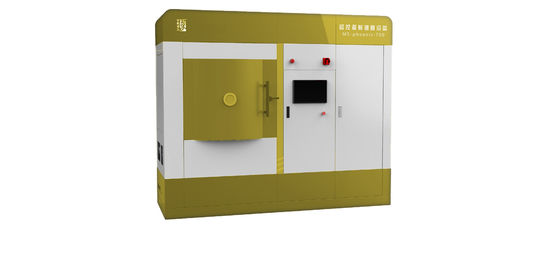

Magnetron Sputtering Deposition in Display Industry
Applications
| Applications | Specific Purpose | Material Type |
| Display | Transparent conductive film | ITO(In2O; -SnO2) |
| Electrode wiring film | Mo, W, Cr, Ta, Ti, Al, AlTi, AITa | |
| Electroluminescent film | ZnS-Mn, ZnS-Tb, CaS-Eu, Y2O3, Ta2O5, BaTiO3 |
Working Principle
As a common physical vapor deposition (PVD) method, magnetron sputtering has many advantages such as low
deposition temperature, rapid deposition velocity and good uniformity of the deposited films. The traditional sputtering
technology works as follows: in a high vacuum environment, the incident ions (Ar+) bombard the target under the
action of electric field to make neutral atoms or molecules on the target surface get enough kinetic energy to leave
the target surface and deposit on the substrate surface to form films. However, electrons will drift under the action of
electric and magnetic fields, resulting in low sputtering efficiency. The short electron bombardment paths also lead to
rising of the substrate temperature. In order to increase sputtering efficiency, a strong magnet is installed under the
target with N and S poles in its center and circumference respectively. Electrons are bounded around the target under
the action of Lorentz force, constantly move in a circle, generating more Ar+ to bombard the target, and finally greatly
increase sputtering efficiency.
Features
| Model | MSC-D-X—X |
| Coating type | Various dielectric films such as metal film, metal oxide and AIN |
| Coating temperature range | Normal temperature to 500℃ |
| Coating vacuum chamber size | 700mm*750mm*700mm (Customizable) |
| Background vacuum | < 5×10-7mbar |
| Coating thickness | ≥ 10nm |
| Thickness control precision | ≤ ±3% |
| Maximum coating size | ≥ 100mm (Customizable) |
| Film thickness uniformity | ≤ ±0.5% |
| Substrate carrier | With planetary rotation mechanism |
| Target material | 4×4 inches(compatible with 4 inches and below) |
| Power supply | The power supplies such as DC, pulse, RF, IF and bias are optional |
| Process gas | Ar, N2, O2 |
| Note: Customized production available. | |
Coating Sample
![]()
Process Steps
→ Place the substrate for coating into the vacuum chamber;
→ Roughly vacuumize;
→ Turn on molecular pump, vacuumize at top speed, then turn on the revolution and rotation;
→ Heating the vacuum chamber until the temperature reaches the target;
→ Implement the constant temperature control;
→ Clean elements;
→ Revolve and back to the origin;
→ Coating film according to process requirements;
→ Lower temperature and stop the pump assembly after coating;
→ Stop working when the automatic operation is finished.
Our Advantages
We are manufacturer.
Mature process.
Reply within 24 working hours.
Our ISO Certification
![]()
Parts Of Our Patents
![]()
![]()
Parts Of Our Awards and Qualifications of R&D
![]()
![]()